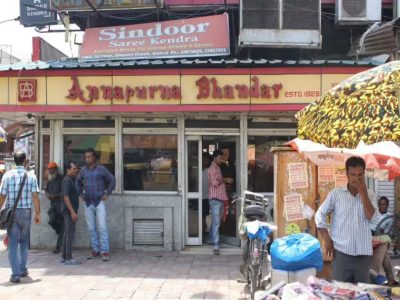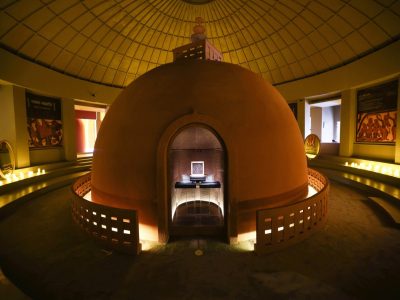An encounter with conservationist architect Urvashi Srivastava opened a whole new world of art in an unlikely location
RENAISSANCE STARTED in Italy in the 15th century when painting, sculpture and architecture excelled and literally advancements pulled Europe out of a millennium-long dark ages, it was also the time when philosophy, literature, music, science and technology showed resurgence. All this was made possible not because of the patronage of an emperor or a king, but that of traders and bankers—the house of Medici of Florence. One of them, Lorenzo de Medici, patronised the greatest of all-time greats like Leonardo da Vinci and Michelangelo. Florence thus became the hub of Renaissance art.
I have come to the conclusion—thanks to many trips to Italy, and following the works and life of painters like Leonardo, Michelangelo and Caravaggio— they earn more foreign exchange for the Vatican and Italy hundreds of years after their death than any living soul, thanks to the millions of tourists who come to witness their art.
In India, there’s not just a city like Florence but a whole region, where wealthy traders patronised art. Shekhawati is a semi-arid region in north-east Rajasthan comprising of three districts of Jhunjhunu, Sikar and Churu. The whole region is full of hundreds of havelis, richly painted with intricate and elaborate frescos, both the interiors and exteriors. This region is home of Marwaris—the wealthiest trading community in India, many of whom went on to set up the biggest industrial conglomerates. The wealthy Marwaris built beautiful havelis and commissioned intricate frescos in the 18th and 19th centuries, very much like the ones the Medici did in Italy 300 years earlier.
I came to know about this hub of art, hidden away in the dusty terrain of Rajasthan, on a chance encounter with Urvashi Srivastava, a trained conservationist and architect working in the Shekhawati region. She first visited this region at the turn of the millennium, and her life changed forever. Some of the frescoes are so intricately painted that they can give Michelangelo a run for his money. Unlike in Italy, they depict not just mythical episodes but also documented the introduction of trains, cars and even airplanes.
Urvashi explains that frescoes acted like information boards. The Marwaris, being traders, were fascinated by scientific development all over the world that are keenly depicted in these frescoes with all the nuances.
This region has lost its charm as a business hub as many of the Marwaris went and settled in different parts of the country in search of greener pastures, and ended up setting up new businesses, giving birth to the Indian private sector–the likes of Mittal, Birlas, Bajaj, Dalmia, Goenka to name a few. Most of these havelis were locked up, and the rich frescos collected dust, and over time many got destroyed.
Now, many of these havelis, it pains Urvashi to explain, are being demolished one by one, because the windows and doors, furniture and trunks, are sold at premium antique shops for a fortune. But in the process, they are destroying the most precious art of all, the frescos. The craftsmanship, whether it was in creating base for frescos, or their own indigenous pigments to paint were at par with the Italians. Urvashi has taken unto herself to protect these havelis and the frescos and has even opened an NGO to help organise the conservation work by developing Shekhawati Heritage Hub. Now after generations, each property has dozens of owners, and none of them are interested to connect to their roots, exemplified by the crumbling edifices. The area is not a major tourist destination, so locals have little incentive to save these frescos. And in the name of restoration or maintenance, they paint distemper over frescos.
Urvashi has an uphill task, but all is not lost, yet, and my contribution would be a trip to Florence of India before the winter ends.





